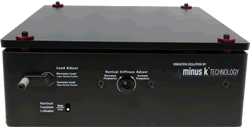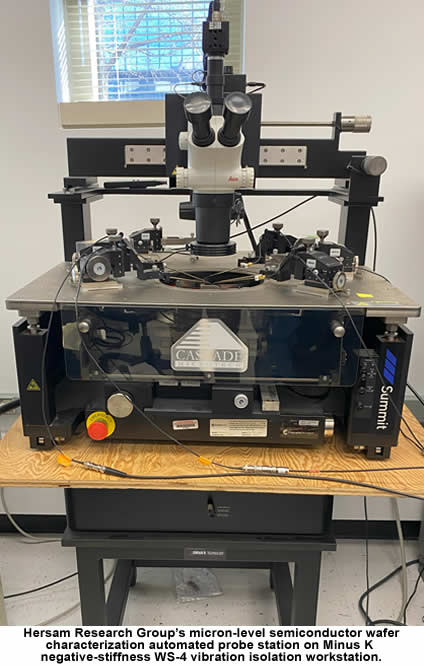|
|
Newsletter July 2025 | Menu of
Newsletters
Cilia, small,
slender, hair-like structures present on the surface of all mammalian cells,
play a major role in locomotion and are involved in mechanoreception. Ciliary
motion in the upper airway is the primary mechanism by which the body
transports foreign particulates out of the respiratory system to maintain
proper respiratory function.
Ciliary motion plays a critical role in the
overall respiratory health of the upper airway. Cilia beat at a native
frequency, and in a synchronized pattern, to continuously transport foreign
particulate trapped in a layer of mucous out of the upper airway. The ciliary
beating frequency (CBF) is often disrupted with the onset of disease as well as
other conditions, such as changes in temperature or in response to drug
administration. Disruption of ciliary motion can lead to severe respiratory
diseases and compromised respiratory function.
Measuring CBF is a
technical challenge and difficult to perform in vivo. Current imaging of cilia
motion relies on microscopy and high-speed cameras that cannot be easily
adapted to in vivo imaging.
Phase-contrast microscopy (PCM) is the
standard for measuring CBF but has limitations. PCM does not permit
appreciation of how CBF varies across the complex landscape of the nasal vault
and sinus tissues. Additionally, optical coherence tomography (OCT) has proven
to be a powerful imaging modality capable of visualization of ciliary activity,
but its field of view is limited.
Spectrally Encoded Interferometric
Microscopy
A team of scientists and engineers at the Chen F-OCT Group,
part of the Beckman Laser Institute of the department of biomedical engineering
at the University of California, Irvine (UCI), have designed a system capable
of overcoming these limitations. The groups current research focus is on
investigating light/tissue interactions; developing medical diagnostic and
therapeutic devices and instruments using advanced optical, microfabrication,
and biomedical technologies; and applications of these technologies for the
early diagnosis of disease.
Previously, the group developed a phase
resolved Doppler optical coherence tomography (PR-D-OCT) system that was able
to obtain lateral cross-sectional images of cilia and cilia movement in
real-time. The inventors realized the need to observe the surface dynamics of
cilia over time and spatially, so they developed a spectrally encoded
interferometric microscopy (SEIM) system with PR-D technology. As a result,
fast, high-resolution en face images of human CBF can be captured and processed
in real-time. Additionally, the integration of PR-D-OCT with PR-D-SEIM provides
a multidimensional view of cilia.
SEIM has emerged as a high-speed,
high-resolution methodology, allowing for visualization of both temporal and
spatial ciliary motion patterns across the surface of upper airway tissues, as
well as propagation of metachronal wave, says Zhikai Zhu, PhD candidate with
the Chen F-OCT Group. SEIM can detect displacement on the nanometer scale at a
kilohertz frame rate.
When coupled with a wavelength-swept laser and a
spectral disperser, SEIM can image tissue en face, explains Zhu. SEIM uses a
phase-resolved Doppler (PR-D) algorithm to measure and map the CBF within an en
face region, providing insight into the changes in CBF across tissue
surfaces.
Need for Vibration Isolation
Full
article... |
|
|
|
|
Featured Product: BM-10 Bench Top
Vibration Isolation Platform
Vertical
frequency is tunable to 0.5 Hz throughout the payload range.
- Horizontal
frequencies are weight dependent.
- Horizontal
frequency of 1.5 Hz is achieved at the upper limit of the payload range.
- At the lower
limits of the payload range the horizontal frequency is approximately 2.5
Hz.
- Vertical
frequency is tunable to 0.5 Hz throughout the payload range.
 The
BM-10
bench top platform offers 10-100 times better performance than a
full size air table in a package only 4.6 inches tall and 12 inches wide and
deep. It also does this without any air or electricity! The
BM-10
bench top platform offers 10-100 times better performance than a
full size air table in a package only 4.6 inches tall and 12 inches wide and
deep. It also does this without any air or electricity!
This vibration
isolation platform is extremely easy to use and offers extreme performance. It
offers a 1.5Hz horizontal natural frequency and our signature 0.5 Hz vertical
natural frequency.
There are only two adjustments. The
BM-10
is perfect for new generations of small SPM's that require the
highest performance in a very compact system.
This is the thinnest,
smallest footprint, most portable, and most user-friendly isolator ever offered
that is capable of delivering this level of performance.They can also be made
cleanroom and vacuum capatible.
Pricing & Sizes for
MK52
|
|
|
|
The lab has
pushed the limits of semiconductor wafer characterization in microscale
electronic devices. Facilitating this research is Negative-Stiffness vibration
isolation.
|
|

|
The Hersam
Research Group – part of the Department of Materials Science &
Engineering, McCormick School of Engineering & Applied Science, at
Northwestern University studies, develops and manipulates hybrid hard and soft
nanoscale materials for applications in information technology, biotechnology,
nanotechnology and alternative energy. The labs advanced electronic and
chemical characterization techniques provide deep insight into these areas,
with key examples including impedance spectroscopy for photovoltaics and
scanning conductive ion microscopy for lithium ion batteries. Such techniques
offer a better understanding of the key issues in enabling practical
applications of these technologies.
Micron-Level, Wafer
Characterization
Another of the groups areas of interest is
semiconductor micron-level, wafer characterization. Wafers, being a thin slice
of semiconductor, such as crystalline silicon, are used for the fabrication of
integrated circuits, and in photovoltaics, to manufacture solar cells. The
wafer serves as the substrate for microelectronic devices built in, and upon
the wafer.
During semiconductor device manufacturing, wafer testing is
performed, where all individual integrated circuits that are present on the
wafer are tested for functional defects by applying special test patterns. The
wafer testing is performed by a piece of test equipment called a wafer prober.
For electrical testing, a set of microscopic contacts or probes, called a probe
card, are held in place while the wafer, vacuum-mounted on a wafer chuck, is
moved into electrical contact.
The Hersam Research Group has developed a
digital wafer map, allowing thousands of devices to be probed in an automated
fashion.
On some of these devices we have 1,000 transistors to
characterize inside of a small sample, said William A. Gaviria Rojas, with the
Hersam Research Group. We are using an automated probe station, manufactured by
Cascade Microtech, for semiconductor micron-level, wafer scale characterization
on the devices we fabricate.
Before, the experiments were performed
with a manual probe station, taking 1 3 hours to complete. Then, the lab
switched to the automated probe station which enabled it to collect data for 2
3 days.
The manual process did not display small misalignments in the
movement of the probes over the 1 3 hour characterization, continued Rojas. But
the longer 2 3 day characterization experiments showed considerable
interruptions during high traffic times the small probes that were in contact
with the devices were losing contact.
We were looking for a vibration
isolation solution that would require low maintenance, with no additional
things like compressed air or electricity, explained Rojas. For these reasons
we selected the Minus K, Negative-Stiffness WS-4 compact vibration isolation
table.
Vibration Isolation
The Group determined that the
problem was vibration caused by people walking by, opening and closing doors
in, and near, the lab where the probe station was located. There was also
vacuum and pump equipment located in the room which created
vibration.
The probe station was positioned on top of cinder blocks,
with plastic material between. This was the extent of vibration isolation being
employed, which was inadequate.
A typical laboratory will almost always
position sensitive micron-level instrumentation on a vibration isolation
platform. Isolating such imaging equipment against low-frequency vibration has
become increasingly more vital to maintaining imaging quality and data
integrity. Indeed, the labs other Raman and AFM instrumentation all have a more
sophisticated level of vibration isolation in place.
Full
article... |
|
|
Previous
Newsletters
|

 |
|
|
